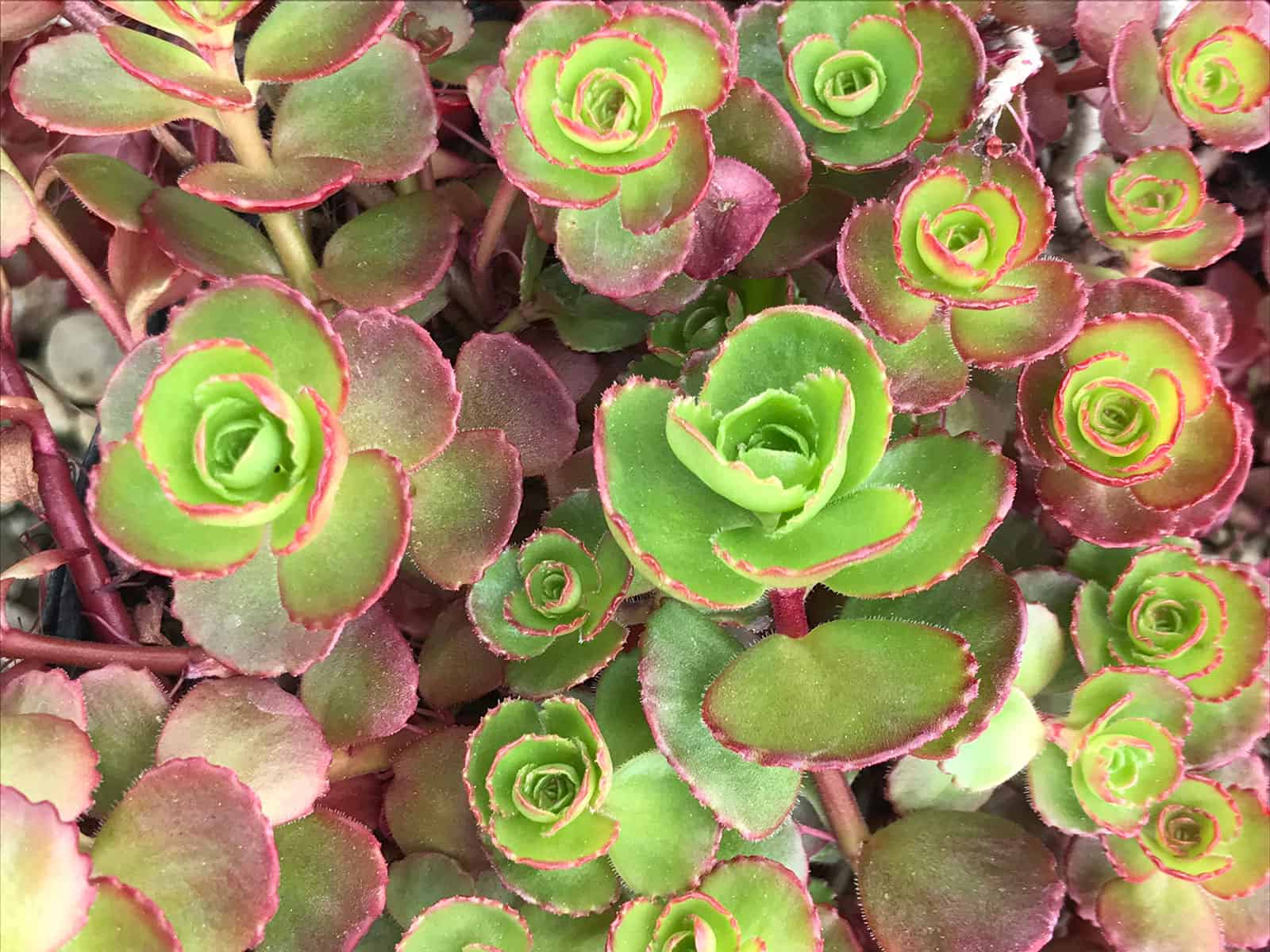Culture: Easily grown in acidic, average, dry to medium moisture, well-drained soils in full sun. Tolerates some light shade. Likes sandy or gravelly soils. Tolerates poor soils. Needs good soil drainage to perform well. Drought tolerant. Avoid overwatering. Plants may be sited 12” apart when grown as a ground cover. Easily propagated by cuttings or division. Plants spread easily (root where nodes touch the ground). Cut a leaf from a healthy sedum with about 1-2" of stem and plant the stem with the leaf above soil. Plants are evergreen in warm winter climates.
Noteworthy Characteristics: Sedum spurium, commonly called Caucasian stonecrop or two row stonecrop, is a low-growing, sprawling, mat-forming sedum or stonecrop that is commonly grown as a ground cover. It is native to the Caucusus. This is an evergreen plant that typically rises only 3-6” tall but spreads to 18-24” wide by creeping, branching stems that easily root at the nodes. Thick, succulent, opposite, obovate, flattened leaves (to 1” long) with wedge-shaped bases are toothed near the ends. Leaves are medium green with reddish-tinged margins. Lower stem leaves are deciduous, but newer leaves near the stem tips are evergreen, typically turning deep burgundy in fall for overwintering. Leaves are arranged in two rows along the stems, hence the sometimes used common name of two row stonecrop. Tiny, 5-petaled, star-shaped, pinkish-red flowers (to 3/4” diameter) in dense, 4-branched inflorescences (to 4-6" tall) bloom from late spring to mid-summer (June-July in St. Louis) atop upright reddish flower stems. Flowers are attractive to butterflies.
Genus name comes from the Latin word sedeo meaning to sit in reference to the general growing habit of many of the sedums (they sit and sprawl over rocks).
Specific epithet means false. Its use here is unclear.
‘Fuldaglut’ is a low-growing, mat-forming, maroon-leaved cultivar that grows 2-3” tall but spreads to 18” wide. Leaves are attractive throughout the growing season. Foliage is semi-evergreen in St. Louis winters.
Problems: No serious insect or disease problems. Slugs and snails may appear. Watch for scale.
Garden Uses: Rock garden or small area ground cover. Border fronts. Stone wall pockets. Sunny banks or slopes. Edging. Containers. Best when planted in groups or massed as a ground cover.
